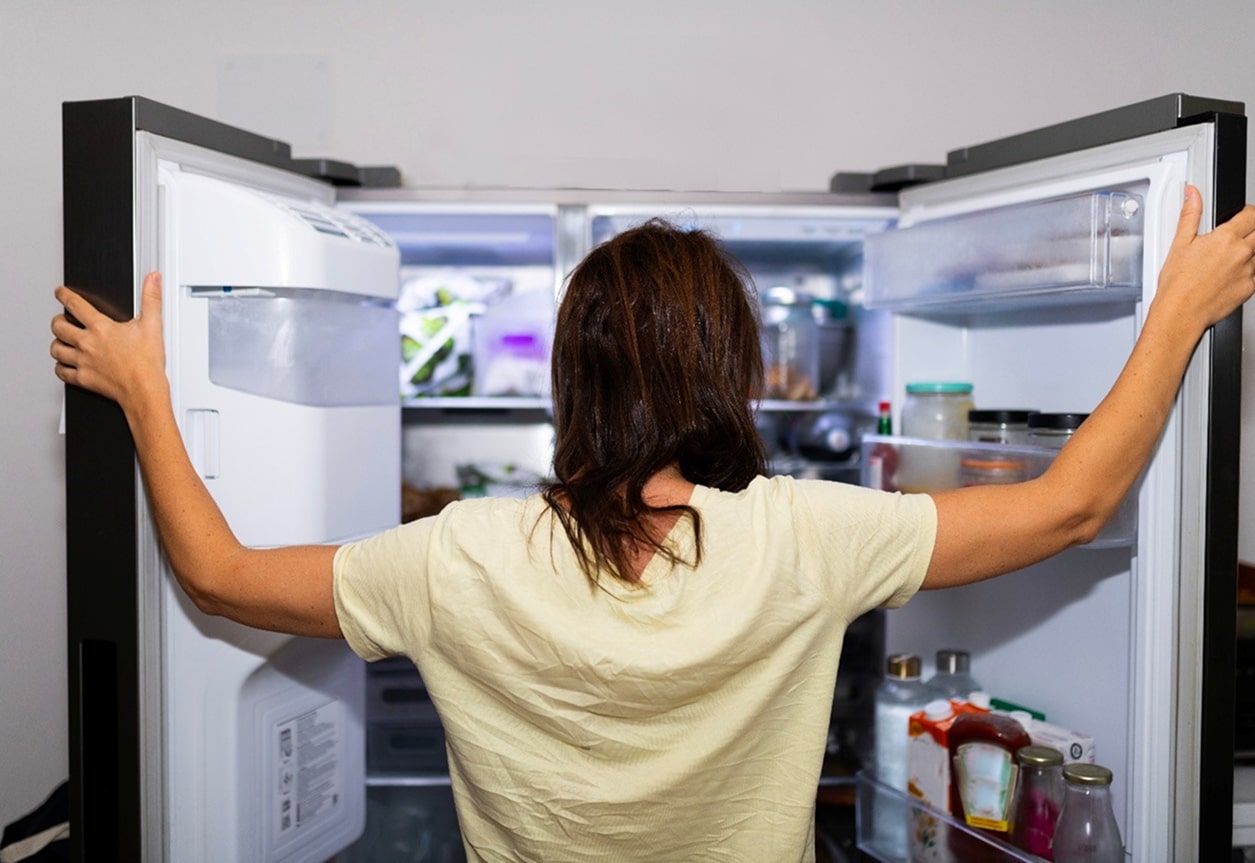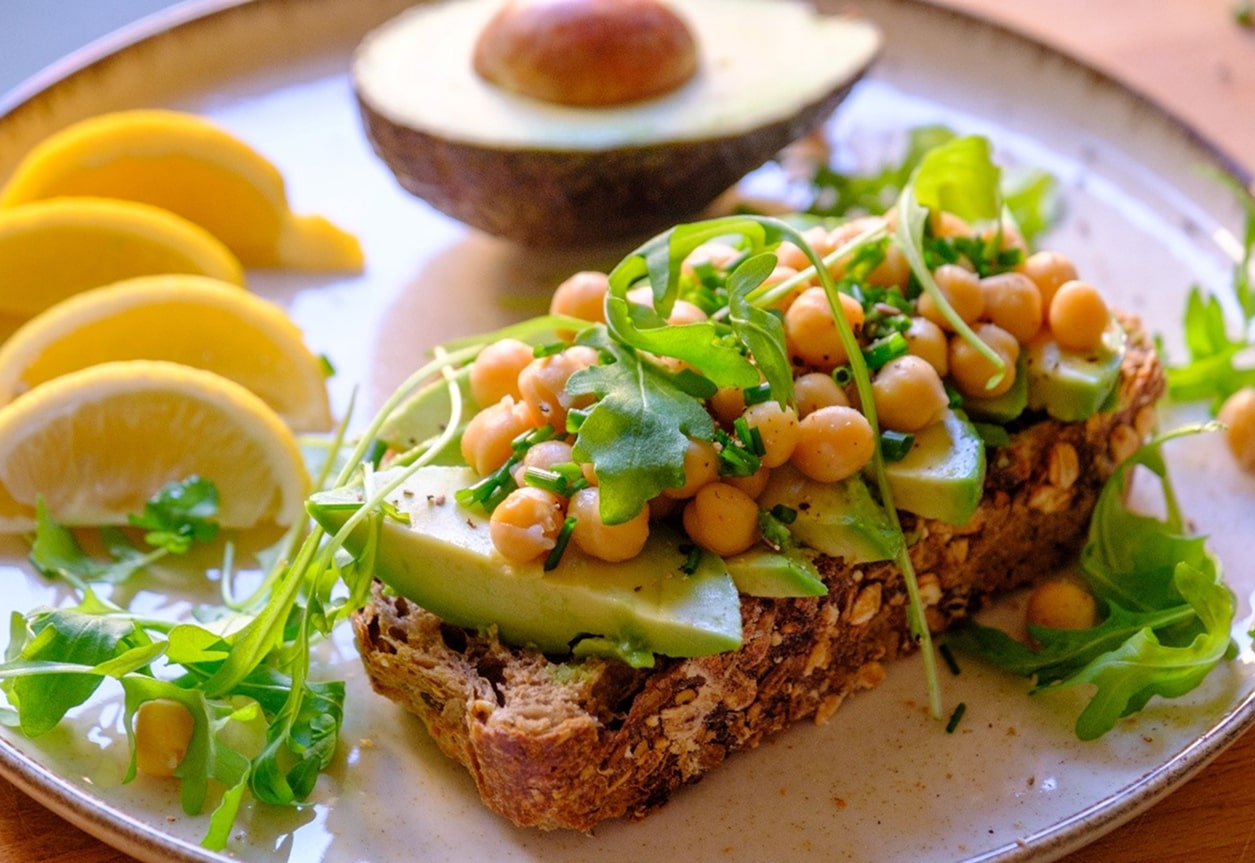blog
June 9, 2025
Sugar Cravings in Menopause: Why They Happen & What Helps
Have your sugar cravings in menopause gone into overdrive lately? Maybe you’ve never really struggled with cravings before, but now they’ve shown up loud and strong. Or perhaps they’ve always lingered in the background, but suddenly they’re more intense— harder to manage, and harder to ignore.
If you’ve caught yourself thinking, “Why can’t I stop eating biscuits?” or “I need sugar right now,” —you are most definitely not alone.
And if you’re also trying to eat well or lose the weight that seemed to appear overnight, these menopause cravings can feel especially frustrating. The truth is, perimenopause and menopause bring with them a whole host of changes. It’s not just about hot flushes and disrupted sleep—though those are real enough—it’s also about unexpected shifts, like a sudden surge in cravings for sweet foods.

It’s so easy to turn the frustration inward. To feel like you’ve lost your willpower or done something wrong. But your body is navigating real hormonal changes that affect cravings, hunger, and how it responds to food.
Scroll through social media and you’ll find endless sugar detoxes, strict plans, and quick fixes. But gritting your teeth and pushing through them rarely works for long. And when the plans don’t work, it’s all too easy to blame yourself—again.
What’s far more helpful (and sustainable) is to trade self-criticism for curiosity. To understand what’s really going on in your body and find ways to work with it, not against it. That way, you can step off the exhausting rollercoaster of restriction and guilt.
What you really need is an approach grounded in science, built on self-awareness, and wrapped in self-compassion.
In this post, we’ll explore:
- Why sugar cravings increase during menopause
- Why just saying no often doesn’t work
- And how you can respond in a way that’s both effective and kind to yourself
Let’s take a closer look.
Why Sugar Cravings Increase During Menopause
Now that we’ve acknowledged how real—and frustrating—these menopause sugar cravings can be, let’s dig into why they happen. Because when you understand the root causes, it becomes so much easier to respond in a helpful way.
There’s a lot happening behind the scenes during perimenopause and menopause—and those cravings for sugar may well be caught up in the hormonal turbulence too.
Here are five key reasons sugar cravings often increase during this time:
1. Declining Oestrogen
One of oestrogen’s jobs is to lessen our cravings and hunger by acting on the part of the brain that manages appetite. So as our oestrogen levels drop during menopause we can begin to feel hungrier more often, and your cravings—especially for sugar or refined carbs—can hit harder than they used to.
2. Emotional Swings
Mood changes, irritability, anxiety, or just feeling a bit fed up are all common in menopause. And during emotional ups and downs, it’s perfectly understandable that we turn to food—especially the comforting, sugar-heavy foods—for a quick lift.
3. Sleep Disruptions
Many women in midlife struggle with falling or staying asleep. And poor sleep doesn’t just leave you tired—it affects the hormones that regulate appetite and fullness. So, after a rough night, those cravings for quick energy from sugar are very real.
If you’re struggling with sleep, you might like our guide to alcohol and menopause: why your usual drink hits harder now, which explains how alcohol affects sleep, mood, and cravings
4. Blood Sugar Fluctuations
Hormonal shifts can make your blood sugar more erratic, leading to energy dips throughout the day that are linked to increased hunger and sugar cravings. That mid-morning or mid-afternoon drop can trigger us to reach for something sweet to refuel fast.
5. Physical Discomfort
Fatigue, joint pain, and a general sense of not feeling like yourself can leave you running on empty. And when your body’s uncomfortable or depleted, it’s natural to crave something—anything—that feels good fast. Food can become one of the quickest and most accessible forms of relief.
For many of us, it’s not just one of these factors—it’s a combination. That’s why doing a bit of gentle “detective” work can be so helpful. Not to judge or fix yourself, but to understand what’s really going on beneath the surface.
Let’s be crystal clear: every single one of these reasons is valid. And none of this is your fault.
But once you know what’s driving your cravings, you can start responding in ways that actually support your body—and your wellbeing. No shame. No guilt. Just a kinder, more informed way forward.
How to Manage Menopause Sugar Cravings (Without Relying on Willpower)
By now, you’ve probably tried a few common strategies for managing sugar cravings during menopause—cutting it out completely, powering through with willpower, or swapping that biscuit for a “healthier” snack.

And while these tactics might help in the short term, they often fall flat over time—especially during perimenopause and menopause.
Here’s why.
These traditional approaches are built on the belief that cravings are something to resist or fix.
But that mindset can push us further away from understanding what’s really going on. Forcing yourself to eat an apple when what you’re truly craving is a doughnut might check the “healthy choice” box—but it doesn’t always satisfy. In fact, it can leave you feeling even more preoccupied with the original craving.
That’s because what we eat is just one piece of the puzzle. There are other—sometimes even more important—factors that influence how cravings show up and how we respond to them. And when we ignore those, we often miss the deeper message our body is trying to send.
Cravings are not just about food. They’re often signals—your body’s way of saying, “Hey, something’s off. I need support.” Maybe that support looks like rest, comfort, connection, or simply a break. When we try to override those signals with willpower alone, the craving tends to get louder—not because you’re doing something wrong, but because the real need hasn’t been met.
That’s why, instead of jumping straight to food swaps or self-discipline, it can be much more powerful to pause and ask: “What is this craving really about?”
This shift—from control to curiosity—is where the real breakthroughs happen.
To help you explore what’s truly driving your cravings, you need to look at three key areas:
- Why you’re eating in response to cravings
- How you’re eating
- What you’re eating
Each of these factors plays a role, and which one matters most will vary from person to person. But when we take time to connect the dots, patterns begin to emerge—and those aha moments are what lay the foundation for lasting change.
It might feel slow at first, especially if you’re used to quick fixes. But deep understanding is what leads to real change—the kind that doesn’t rely on constant willpower or rigid rules.
Cravings Decoded: The Why, How & What of Eating
The Why of Eating
Understanding why we eat in response to sugar cravings is a game-changer. Emotions, stress, loneliness, and even habit can drive us toward food. Recognising this opens the door to new possibilities: maybe you need rest or a break, maybe a walk, or a chat with someone.
Ask yourself:
- Did something happen today that unsettled me?
- Am I looking for distraction or comfort?
- What might help me feel supported in this moment, besides food?
The goal isn’t to never eat in response to emotion, but to bring awareness to it. Sometimes, choosing to soothe with food is okay. But doing it mindfully, not automatically, can make a real difference.
The How of Eating
How we eat has a bigger impact on fullness and satisfaction than we often realise.
When we slow down, chew well, and truly taste our food, our brain is better able to register the experience—and we’re more likely to feel satisfied with less.
But in today’s fast-paced world, this kind of mindful eating during menopause can feel like a luxury. It’s common to eat while distracted—watching TV, scrolling our phones, or working at a desk. These habits disconnect us from the act of eating and from our body’s natural hunger and fullness signals.

Simply sitting down at a table, without distractions, can be a powerful first step.
And remember this isn’t about being perfect—it’s about being more present.
The What of Eating
The types of food we eat significantly impact how often cravings arise and how strong they feel.
- Fibre-rich foods for menopause cravings help slow digestion and feed the good bacteria in your gut, which play a surprising role in regulating hunger and mood.
- Protein to reduce sugar cravings helps balance blood sugar and reduce hunger hormones—which is especially crucial as your body changes in menopause.
- Ultra-processed foods have been linked with weight gain and may bypass natural satiety signals. They’re easy to overeat, low in nutrients, and high in added sugars and fats that disrupt your gut and your hormones.
When you nourish yourself with whole, satisfying foods, you give your body what it truly needs—and cravings begin to lose their grip.

The Six Steps to Curbing Sugar Cravings in Menopause
Here’s a practical framework to help you manage the why and how of eating and shift your relationship with cravings one step at a time:
Step 1: Pause & Tune In
Before reaching for something to eat, take a moment to check in. Are you physically hungry or is it a craving?
Real physical hunger vs. sugar cravings: Hunger usually builds gradually and is felt in the stomach. Cravings tend to hit quickly and often focus on a specific food, like chocolate or biscuits.
Even just asking, “What am I really needing right now?” can be powerful.
Step 2: Play Detective
Start observing your cravings with curiosity.
- What time did the craving show up?
- What was happening just before it?
- How did you feel?
This isn’t about judging yourself—it’s about building awareness. Over time, you’ll notice craving triggers you can begin to address.
Step 3: Build a Vivid Picture
Think about how you typically feel after reacting in your usual way to a craving. Maybe it’s helpful momentarily but followed by guilt or a slump in energy.
Now imagine how you’d like to feel instead—energised, calm, and content. Creating a vivid contrast between those two outcomes gives your brain helpful cues.
Step 4: Replay & Ride the Wave
Sugar cravings in menopause often rise and fall like waves. When you feel one coming on, pause and replay what you feel like after you react in your usual way. Then allow yourself to fully feel the craving without reacting.
Most cravings fade within minutes if we let them pass without reacting. You’re not fighting the wave—just riding it out.
Step 5: Eat with Awareness
If you do eat, make it a mindful experience. Sit down, and fully engage with your food:
- What does it look, smell, and taste like?
- How does each bite feel in your mouth?
- At what point do you notice satisfaction turning to discomfort?
Step 6: Soothe Without Food
Cravings are often tied to a need for emotional comfort. And while making space for yourself might feel challenging—especially when life is busy—it can make a powerful difference.

Small, nourishing moments can go a long way. A short walk in nature, a warm bath, messaging a friend, music or a calming podcast, journalling, or simply sitting quietly with your thoughts—all of these can help.
The key is finding what genuinely supports you. These acts of self-care help refill your emotional tank and offer the kind of comfort that food alone often can’t provide.
Eat Smarter, Crave Less: Nutrition Tips for Menopause Cravings
Once you’ve built awareness around the why and how of your cravings, the what becomes your nutritional foundation for managing menopause cravings.
The Fibre Factor
Fibre is essential for managing cravings, especially during menopause. It helps:
- Stabilise blood sugar levels
- Promote feelings of fullness
- Feed beneficial gut bacteria that regulate appetite
Most of us aren’t getting enough fibre—especially not the variety we need. Aim for 25–30g per day from:
- Vegetables
- Fruits
- Whole grains, pulses, seeds, and nuts
The Protein Powerhouse
Protein plays a critical role in reducing sugar cravings during menopause and maintaining muscle.
It helps:
- Slow digestion and promote satisfaction
- Reduce hunger hormones (like ghrelin)
- Stabilise blood sugar to avoid energy dips
Include protein in every meal:
- Eggs, Greek yoghurt, cottage cheese
- Lentils, tofu, tempeh, and beans
- Fish, chicken, turkey, or lean red meats
Ultra-Processed Foods and Sugar: Know the Triggers
Ultra-processed foods are often high in refined carbs, sugars, salt, and unhealthy fats—but low in fibre, protein, and real nutrition and have numerous additives that may impact health adversely. They’re designed to be hyper-palatable and easy to overeat.
Common examples include:
- Biscuits, cakes, crisps
- Sweetened cereals and snack bars
- Fast food and ready meals
These foods can disrupt gut health, increase cravings, and make it harder to hear your body’s true signals. Simply noticing how they affect you can empower you to make more supportive choices.
The Way Forward (Long Term)
Managing sugar cravings in midlife isn’t about following sugar detoxes or pushing through with willpower. It’s about working with your body—with understanding, awareness, and care.
If this approach speaks to you, and you’re ready to go deeper into how you put this into practice you might love my curbing your sugar craving kit – a beautifully designed bundle created to help you put the theory into practice.
Inside, you’ll get:
- 5 supportive, science-backed videos to help you shift your mindset, understand your cravings, and take meaningful steps forward
- A Companion Workbook with reflective prompts, practices, and a space to track your progress
- A Craving Tracker to help you spot patterns and triggers
- The Six-Step Method to reduce cravings with confidence (no guilt or strict rules)
- A Nutrition Video to show you what foods help ease cravings—and which ones don’t
- A 40 Healthy Snack Ideas & Recipe Booklet to keep you nourished, steady, and satisfied
- A Craving Response Checklist so you’ll know exactly what to do when a craving strikes
✨ No pressure—just the next step to help you move forward.
Learn More and Get Instant Here
Making changes in midlife doesn’t have to feel overwhelming. If you’d like some personalised support to get clear on what will truly help your habits, health, and weight, take a look at my Work With Me page to see how we can work together.